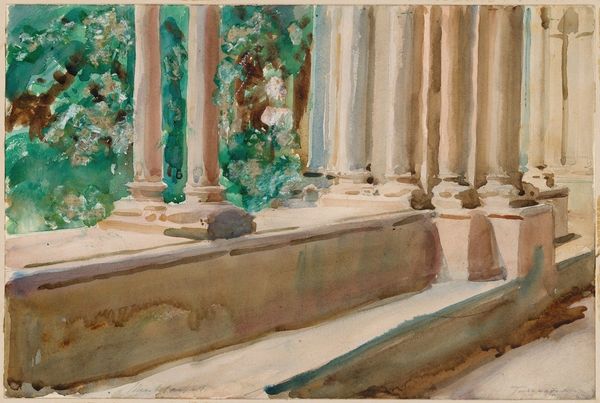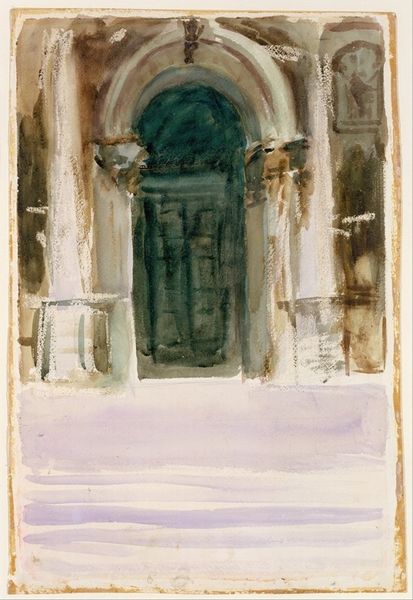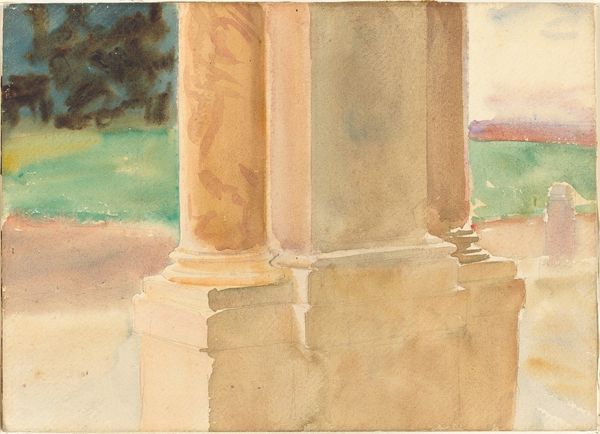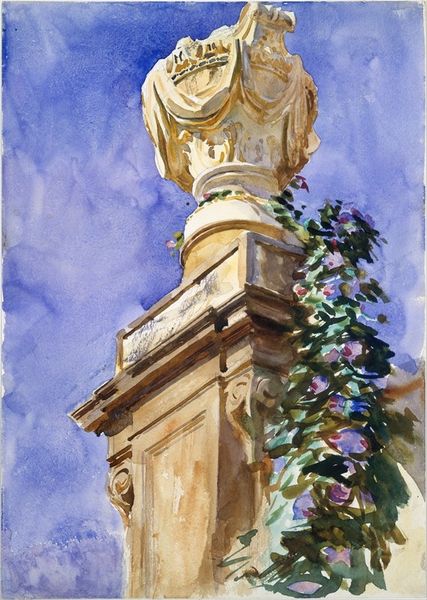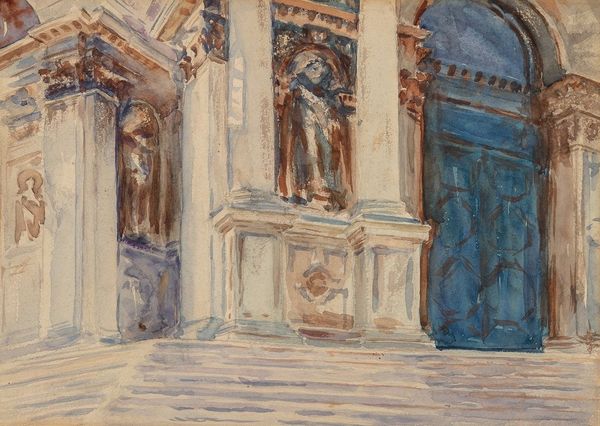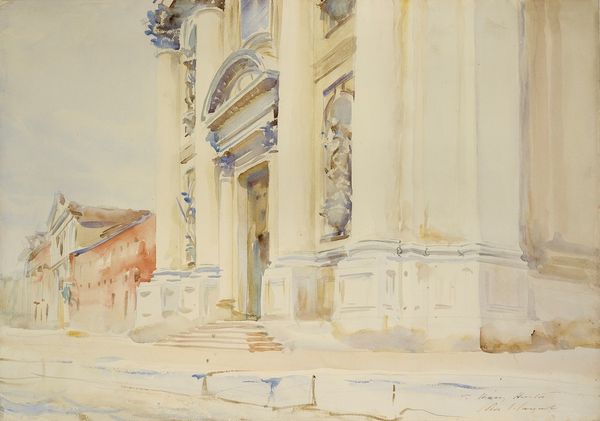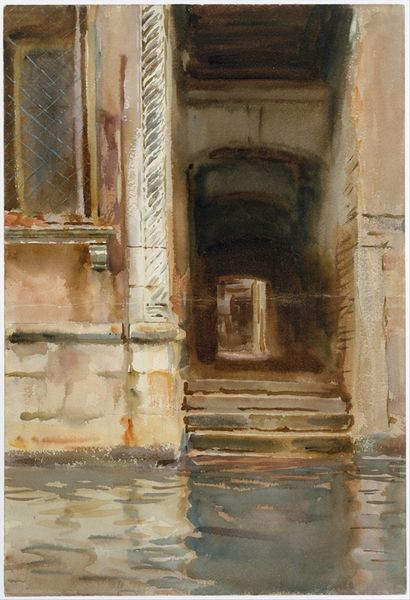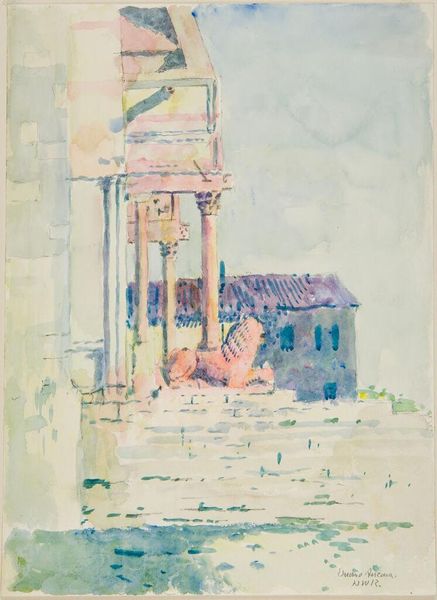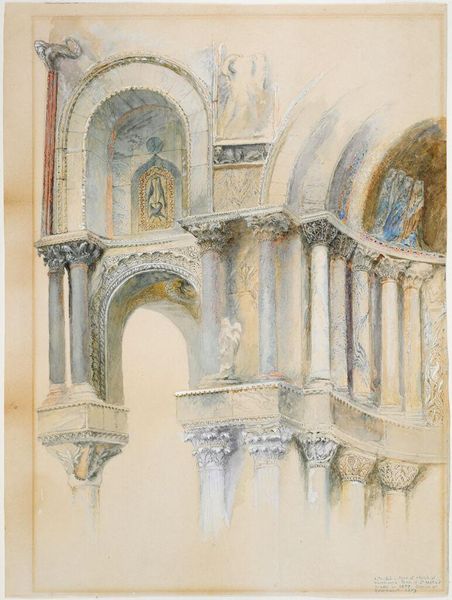
Copyright: Public Domain: Artvee
Curator: This watercolor piece by John Singer Sargent, circa 1907, titled "Loggia, Villa Giulia, Rome," immediately strikes me as an interplay of shadow and light. The cool violet sky meeting the warm tones of the architecture. Editor: It feels unfinished somehow, though perhaps intentionally. I wonder about the colonial gaze embedded within this image of Italian architecture painted by an American artist at the start of the 20th century. Curator: The impressionistic brushstrokes speak to a fleeting moment, an observation. He isn’t so much representing the loggia as he is capturing an essence, a feeling conjured by the specific conditions of light at this specific site. We can explore how the architectural form has been adapted from Classical Greek ideals through a Roman iteration to this Renaissance articulation. Editor: Indeed. And isn't it always a loaded act, this depiction of ruins, especially from a position of power? How do we consider what this choice signifies? The watercolor captures decay, an almost melancholy meditation on faded grandeur viewed through a specific lens. Curator: Watercolors are such telling signifiers; traditionally associated with a portable, ‘feminine’ amateur art practice, they speak to a certain freedom, and here the architectural subject seems softened. The precision of form associated with architecture dissolves into the impressionistic sweep of his brush. We’re allowed an intimate experience that shifts this symbol of Roman Imperial power into something softer and more personal. Editor: It's tempting to read this through a contemporary lens, thinking about how these classical structures become romanticized, almost abstracted from their socio-political origins through processes of cultural memory. It feels important to actively address this romanticizing impulse. Curator: Exactly, by doing so, we come closer to the emotional core of Sargent’s creation, which reflects a complex play between historical context and his individual emotional experience. Editor: Considering Sargent’s place in history and this choice of medium lets me begin to reassess and understand not only how we read images of ruins, but what meaning this vista had in its own time.
Comments
No comments
Be the first to comment and join the conversation on the ultimate creative platform.
